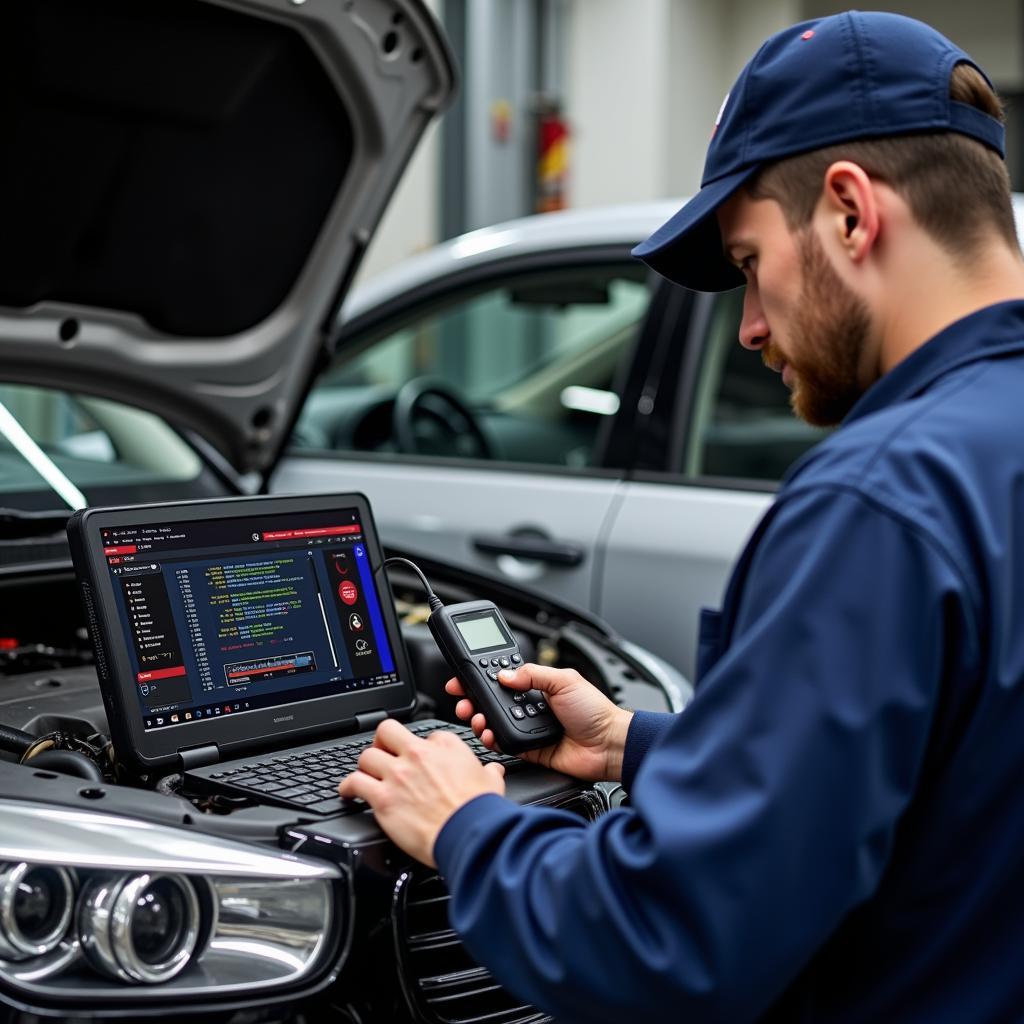A flooded engine can be a frustrating experience, leaving you stranded and wondering what to do. This comprehensive guide will walk you through How To Fix A Fuel Flooded Car, covering everything from diagnosing the problem to getting your engine running smoothly again. Let’s dive in and get you back on the road. fixing flooded car
Understanding a Flooded Engine
A “flooded” engine means there’s too much fuel and not enough air in the combustion chamber, preventing ignition. This typically happens due to excessive cranking, a malfunctioning fuel injector, or a faulty fuel pressure regulator. Recognizing the signs is crucial: a strong gasoline smell, difficulty starting, or the engine sputtering and dying after briefly running.
How To Fix a Fuel Flooded Car: A Step-by-Step Guide
Fixing a fuel flooded car is often simpler than you might think. Follow these steps:
- Confirm the Issue: Check for a strong fuel odor and attempt to start the car. If the engine cranks but doesn’t catch, or starts briefly then dies, it’s likely flooded.
- Allow the Engine to Air Out: Open the hood and let the engine compartment air out for at least 20 minutes. This helps evaporate excess fuel.
- Depress the Gas Pedal Fully: Holding the gas pedal all the way down while cranking (for no more than 10-15 seconds at a time) allows maximum airflow, helping to clear out the excess fuel.
- Check the Spark Plugs: If the engine still won’t start, consider checking the spark plugs. Flooding can sometimes foul the plugs, preventing them from sparking. If they’re wet, dry them off or replace them.
- Try Starting Again: Once you’ve tried these steps, attempt to start the car again. If it still won’t start, you may have a more serious issue requiring professional help.
What Causes a Flooded Engine?
Several issues can lead to a flooded engine. Understanding these can help you prevent it from happening again.
Common Causes of Engine Flooding
- Excessive Cranking: Repeatedly trying to start a car that isn’t starting due to another issue can flood the engine.
- Faulty Fuel Injectors: Leaky or stuck-open fuel injectors can introduce too much fuel into the cylinders.
- Malfunctioning Fuel Pressure Regulator: A faulty regulator can cause excessively high fuel pressure, leading to flooding.
- Cold Weather: In extremely cold temperatures, fuel can evaporate less readily, increasing the risk of flooding.
“A common misconception is that flooding only happens in older cars. Modern vehicles with electronic fuel injection can also experience this issue, although it’s less frequent,” explains automotive expert, Robert Hernandez, ASE Certified Master Technician.
Preventing a Flooded Engine
Taking a few preventative measures can significantly reduce the risk of flooding your engine.
- Don’t Over-Crank: If the engine doesn’t start after a few tries, stop cranking and investigate the underlying issue.
- Regular Maintenance: Keeping your fuel system in good working order, including regular fuel filter replacements and injector cleaning, can prevent flooding.
- Address Starting Problems Promptly: If your car is experiencing difficulty starting, address the issue quickly to avoid further complications like flooding.
When to Seek Professional Help
While often a simple fix, sometimes a flooded engine indicates a more serious underlying problem. If you’ve followed the steps above and your car still isn’t starting, it’s best to seek professional help. A qualified mechanic can diagnose the issue accurately and perform the necessary repairs.
“Don’t underestimate the importance of addressing starting problems early. A simple flooded engine can escalate into costly repairs if ignored,” advises Sarah Chen, automotive engineer and consultant.
how do you fix a flooded car engine
 Mechanic Diagnosing Car Engine Problem
Mechanic Diagnosing Car Engine Problem
Conclusion
Knowing how to fix a fuel flooded car can save you time, money, and frustration. By following the steps outlined in this guide and taking preventative measures, you can avoid this common car problem and keep your vehicle running smoothly. If you need further assistance or have a persistent starting issue, don’t hesitate to connect with us at AutoTipPro. We’re here to help. Call us at +1 (641) 206-8880 or visit our office at 500 N St Mary’s St, San Antonio, TX 78205, United States. how fix power steering in electric cars
FAQs
- Can a flooded engine damage my car? While a single instance of flooding is unlikely to cause significant damage, repeated flooding can potentially foul spark plugs and other components.
- How long does it take for a flooded engine to clear? Allowing the engine to air out for 20-30 minutes is usually sufficient.
- What if I smell gas even after the engine starts? This could indicate a leak in the fuel system, and you should have it inspected by a mechanic immediately.
- Is it safe to drive a car with a flooded engine? If you’ve successfully cleared the flooding and the car starts and runs normally, it should be safe to drive.
- How much does it cost to fix a flooded engine? If the flooding didn’t cause any further damage, the cost should be minimal. how much to fix car cylinders However, if there are underlying issues, repair costs can vary.
- Can a flooded engine happen in electric cars? No, electric cars do not have a traditional fuel system and therefore cannot experience a flooded engine in the same way as gasoline-powered cars.
- What’s the best way to prevent a flooded engine? Avoid over-cranking the engine and address any starting problems promptly.







Leave a Reply